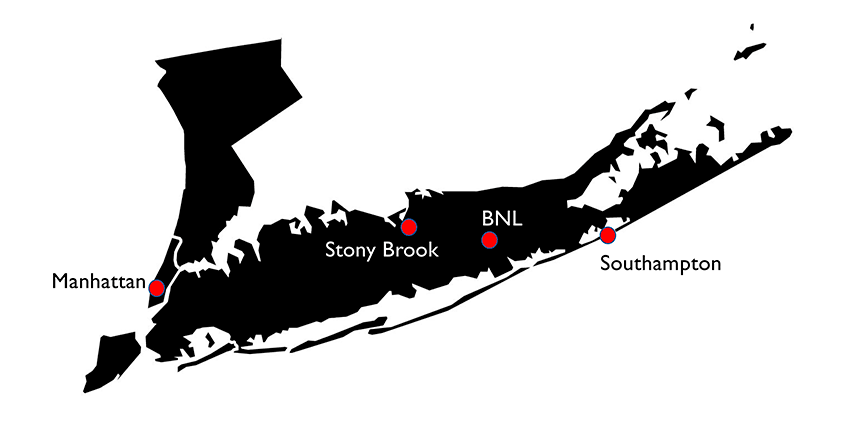



Sensing
Unique expertise
Brookhaven National Laboratory has unique expertise in measurement theory, instrument development, and advanced geophysical data analysis in the areas of aerosols, trace gas monitoring, winds and turbulence, and precipitation across several interfaces relevant to those found in energy hotspots. In addition, Brookhaven has world-leading capabilities in microwave and optical sensor technology and science applications.
Fixed and Mobile Observatories
The Center for Multiscale Applied Sensing in partnership with the Radar Science group at Stony Brook University continuously operates 4 fixed observatories. The fixed stations are suited in lower Manhattan, NYC, Stony Brook, Brookhaven National Laboratory and Southampton in Suffolk, NY. The selected stations transect the complex urban-coastal environment in an east-west direction. Each fixed observing station includes active lidar and radar observations, surface meteorology and rainfall information. The measurements from these stations will provide critical atmospheric measurements such as PBL height, aerosol/smoke profiling, cloud fraction and base height, hydrometeor distribution and type in the atmospheric column and rain/snow amount.

The observations from the profiling sensors will be enhanced by additional observations from our two mobile trucks: i) the BNL “fair-weather” mobile truck that includes a state-of-the-art scanning Doppler lidar, a met station and small and medium size drones capable of performing meteorological and air quality measurements and ii) the SBU “weather” mobile truck that features a profiling radar, lidar, a sounding system and a state-of-the-art phased array X-band radar.
Distributed Measurement Networks
CMAS scientists are working with Brookhaven’s Instrumentation Division to develop networks of small, low power, autonomous instrument packages to target specific applications in environmental and climate science. Traditionally, surface observations are concentrated in single, regionally representative sites comprising suites of complex instrumentation that require significant infrastructure. However, many of the geophysical parameters important to terrestrial and atmospheric processes vary on much finer scales. As models of the land-atmosphere system are increasingly run at higher spatial and temporal resolutions, better understanding of these processes and their interactions at commensurate resolution is required.
Small sensor packages are designed to measure specific properties or interactions of interest and so can be optimized for size, weight, power, ease of data communications, cost, and autonomy. This provides flexibility in the mode or location of deployment – for example very remote areas or urban centers – and also in the density of measurements within the network. These sensor packages may also be appropriate for flying on Unmanned Aerial Systems (UAS), providing continuous spatial coverage over the surface or vertical profiling of atmospheric constituents, augmenting the ground-based network. Moving from the single, comprehensive, and complex measurement site to elemental sensor packages in distributed networks broadens the range of questions that can be asked of the environment that humans inhabit.
